Jetty Work In A Multihull
Book Extract
Handling and docking a multihull is an acquired skill.
Multihull Seamanship Rule
Practise manoeuvring. Practice teaches vessel characteristics.
The ease with which a multihull is moved by the wind has a major influence on the approach to a jetty. The lighter the multihull and the larger the windage (e.g. wing masts), the more preparation is required. Catamarans with twin diesel inboards have excellent manoeuvrability. In contrast, a single stern-mounted outboard or drop-down diesel leg requires a lot of careful forethought and practice.
Single Outboard-Driven Multihulls
Many multihulls need to be going about four knots before they will turn sharply into the wind by rudder action alone. It is an advantage to be able to steer the outboard to manoeuvre when a multihull is not moving fast enough for the rudders to have much effect.
If the wind is light you will have better manoeuvrability with the daggerboard(s) up. If the wind is strong enough to cause side slipping or leeway then daggerboard(s) down will help reduce this at the cost of a slightly wider steering circle.
Lines and fenders should be prepared well in advance. When approaching a jetty to windward have someone ready to secure a line from the bow and use reverse to swing the stern in.
On a trimaran have the crewman on the middle hull with the line secured to the float.
When leaving a jetty, think ahead about the effect of the wind. Leave a line secured to the jetty to facilitate turning if the room is tight. To ensure the line will run free never have it spliced at the end.
A splice will mean a thicker portion of rope and one day it will catch on a bollard or jetty structure.
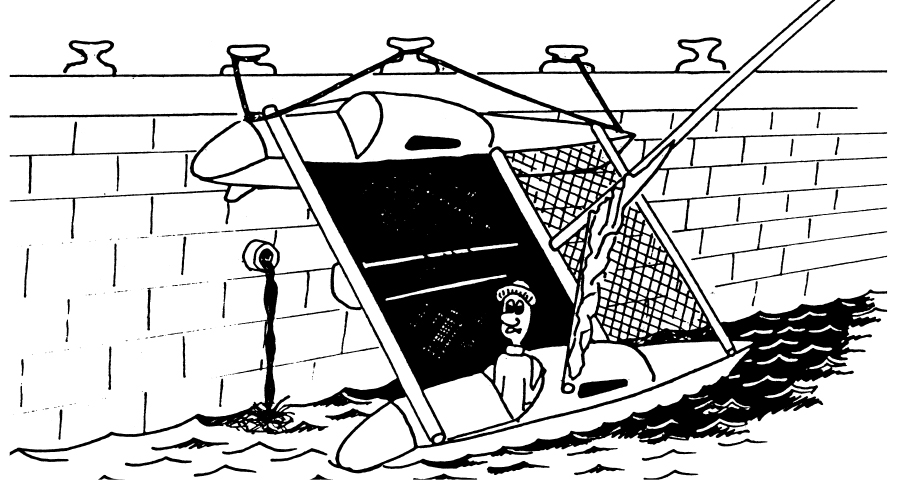
Consider outflows, currents and tide when mooring!
Twin Motor Manoeuvring
If both propellers rotate in the same direction, then be aware of the significant sideways pull when the motors are given short hard thrusts. By using this knowledge, it is often easier to come alongside a jetty in one particular direction. If the propellers are counter rotating (i.e. drive in opposite directions to one another) then this will not occur and coming into a jetty will require large movements of the rudders to direct water flow over the rudders to steer the stern.
Practise your approach technique when mooring up in tight areas. You need to be able to extend your ‘feel’ to all corners of the multihull so the width is well covered. When going into a marina berth concentrate on one hull, getting it as close as possible. Occasionally watch the fit of the other hull but, if your preparation is right, then only one hull needs to be parked correctly – the other will follow!
FENDERS
Most multihulls have straight sides so fenders are needed along the length. If the jetty consists only of posts then rubbing boards should be used.
On trimaran floats the fenders need to have ties top and bottom so they can be tied around the float. This is especially true if the floats are capable of riding up in bouncing waves.
Multihull Seamanship Rule
If in doubt when approaching a jetty do a false run to test windage and current.
Mooring Up
Tie up your multihull correctly.
Many trimarans do not have cleats on the outer floats and the lines have to be run inboard. There are four lines needed. The head rope and the stern rope should run from the bow and stern away from the boat at about 45 degrees to the quay. This will allow for the tidal range.
Springs should always be rigged from the bow and the stern and should run at least the length of the hull. The springs should be as tight as possible. This will ensure the hulls cannot rotate to damage the bow or transoms. If the springs are run from amidships (as is often incorrectly done) then the bow and stern can swing and the tensioning effect is lost. Always allow for the tide. The jetty is not the place to fly a hull.
Chafe is a major mooring problem. Protect lines running over jetty boards with a hose. Look at the fairleads, rigging and deck fittings for potential chafe points.
When tying up, tie a knot that can be undone. Multihulls with a high windage work their mooring lines heavily and a bowline reduces the strength of the rope by about 50 percent and can be impossible to untie when under strain.
It is better to use a round turn and two half hitches. This will not jam under strain, it grips the object tightly (thus not suffering as much chafe) and will not slip or spring apart.
Always use four separate lines for mooring up. If the one line is used for a spring and a head or stern rope then adjustment cannot be done without interfering with others. Ideally, each line also should have its own cleat.
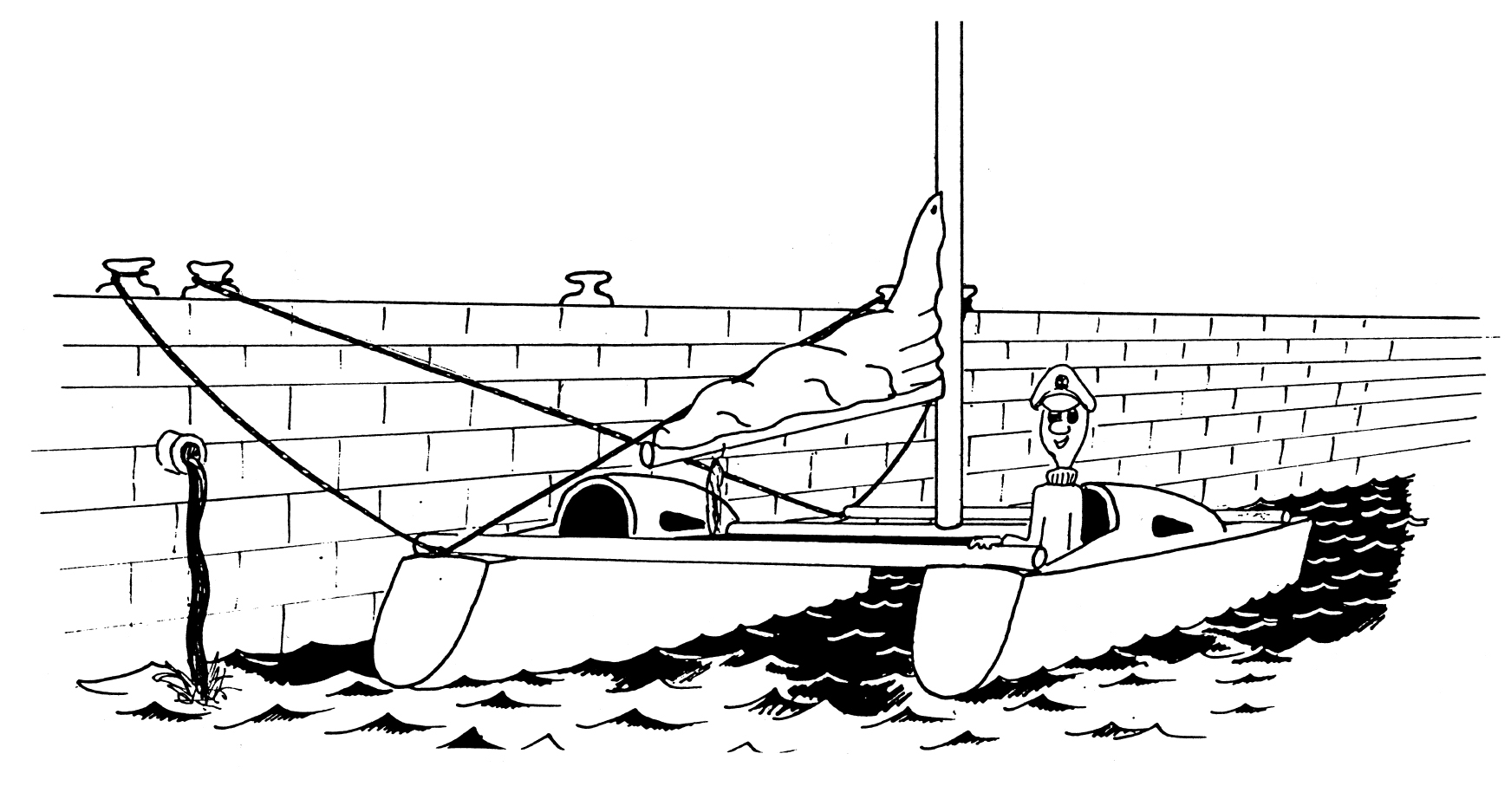
Mooring Alongside Another Yacht
Rafting up to another multihull can be a nightmare if there are not enough cleats. Running rope across outboard hulls creates treacherous trip lines and potentially allows the hulls to ‘work’ up against one another and force fenders out. Ideally, the outboard hulls can be firmly secured with four lines as against a jetty.
If the yacht inside is on a jetty then the wide beam of a multihull increases the load on the lines of the inner yacht.
Run lines from your multihull to the jetty for added support. These should originate on your outer hulls, bow and stern.
If the windage is high then consider laying an anchor to secure the raft square.
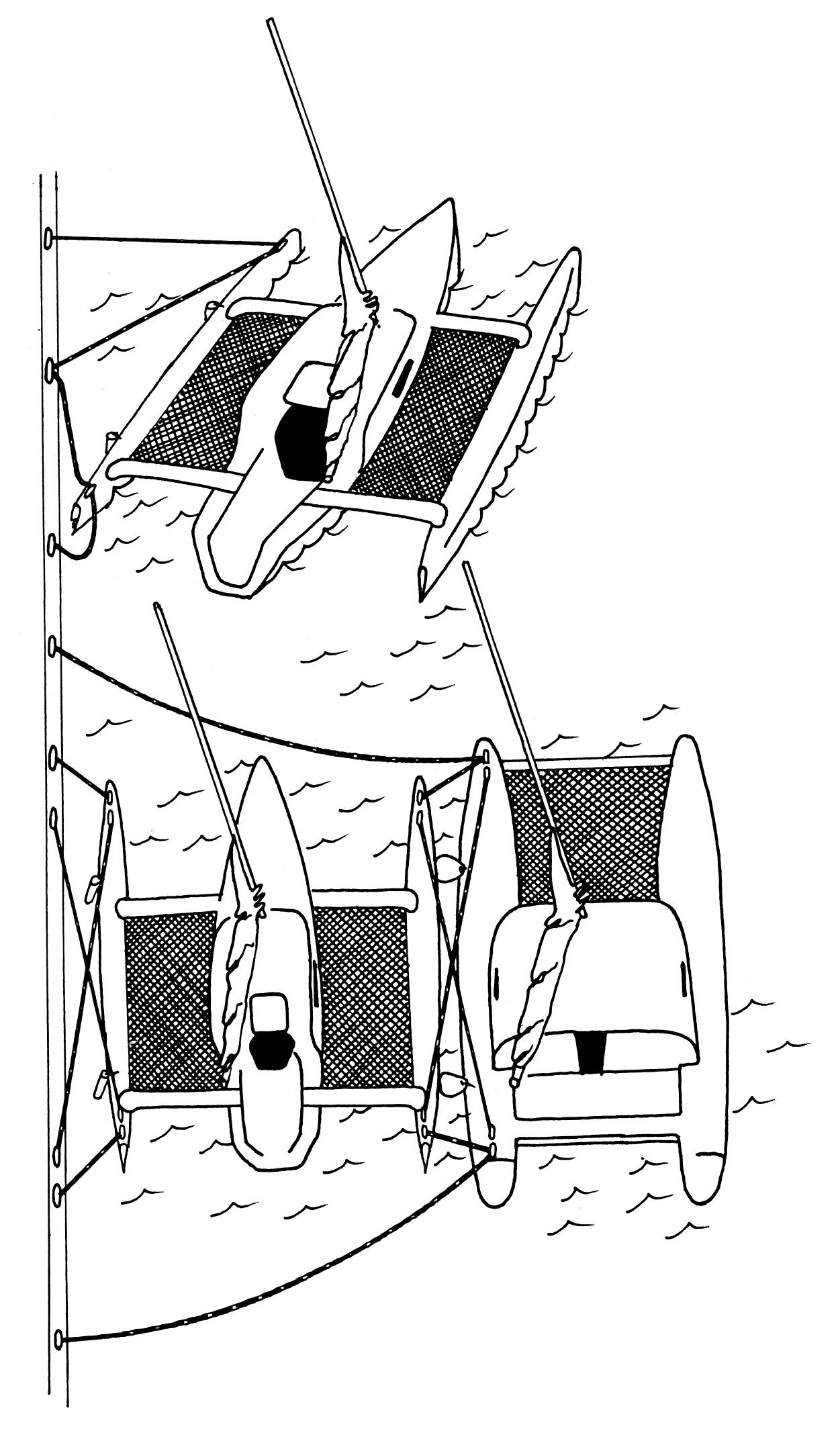
Beam Wind Jetty Handling
One of the more awkward manoeuvres is leaving a jetty with a beam wind pushing your multihull onto it. There are two techniques depending on how many motors you have.
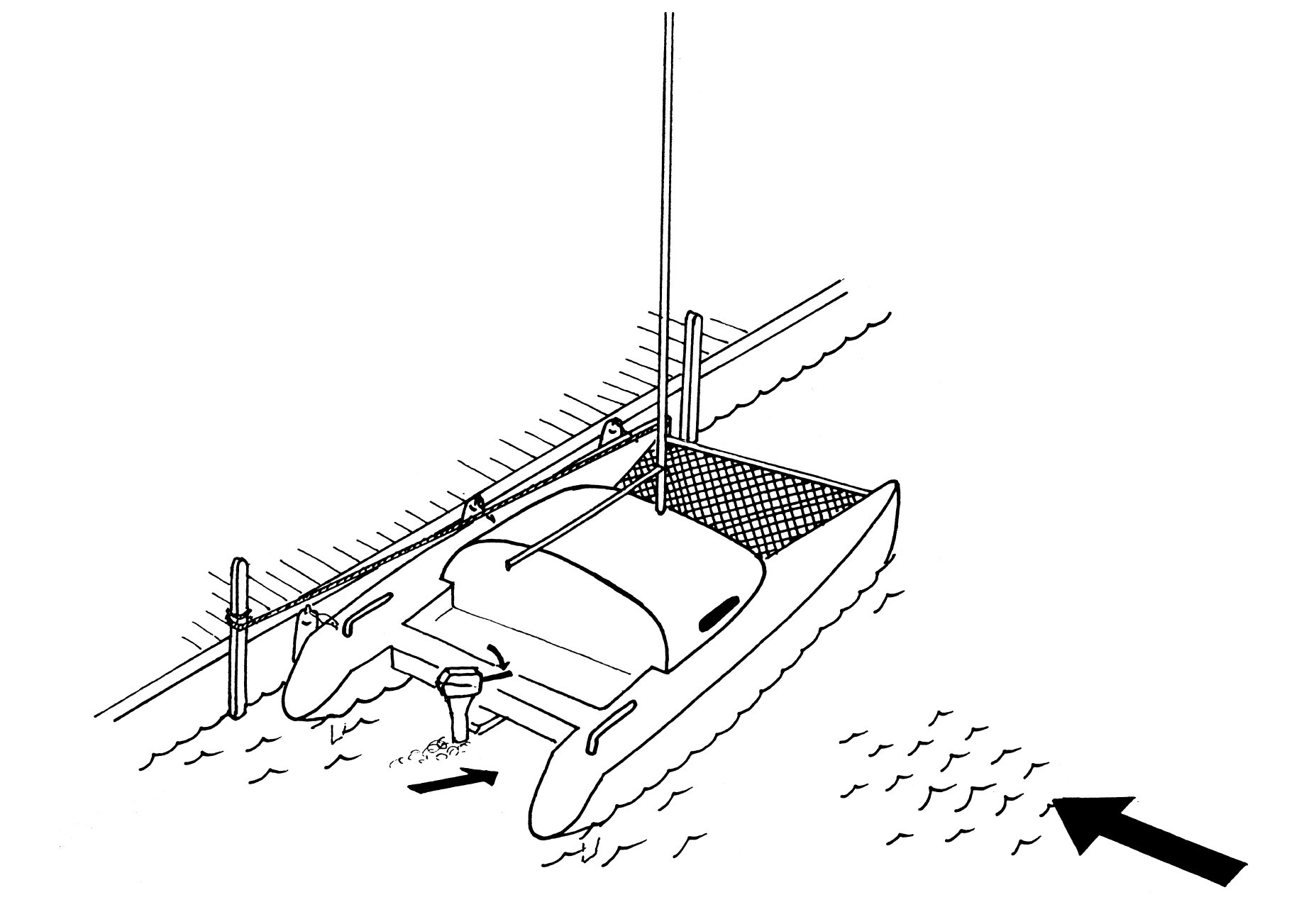
Catamarans & Trimarans With Central Motors
If possible, angle the driving force so that the side force of the propeller is combined with the spring line. When the multihulls stern is clear in the channel drive in reverse to leave the jetty.
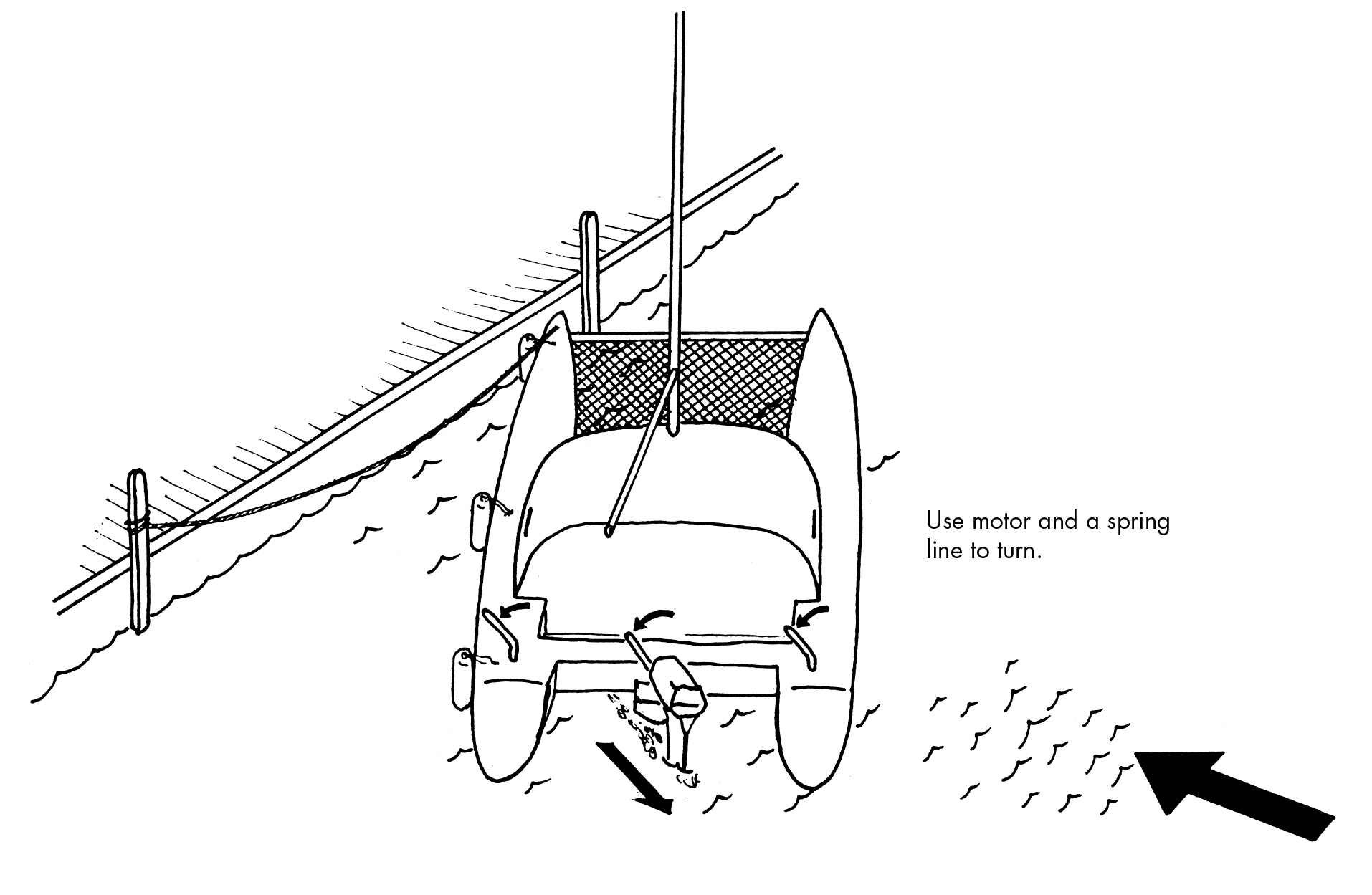
Use motor and a spring line to turn.
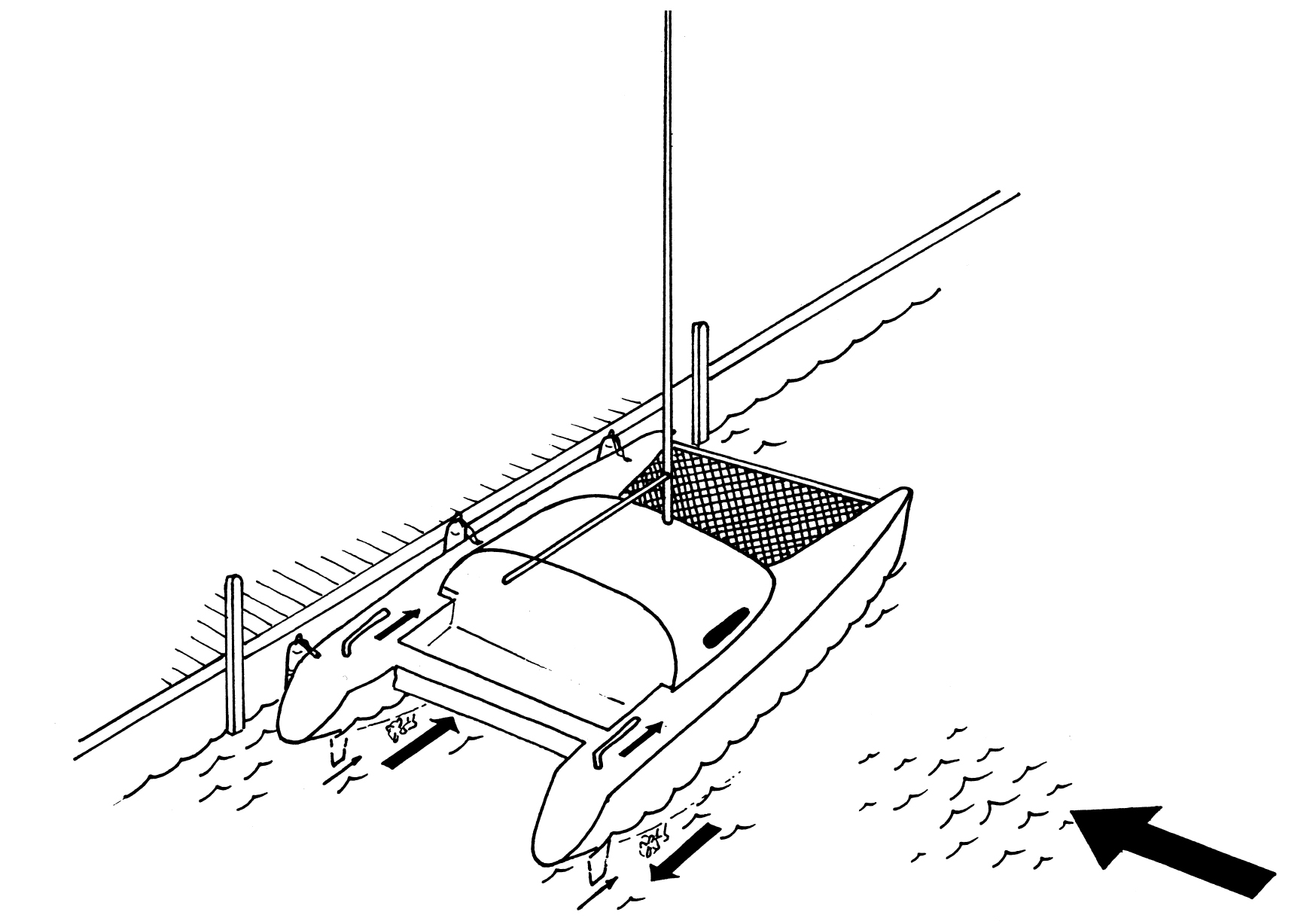
Catamarans With Twin Motors
It is possible to turn the boat in its own length. Ensure the fenders are up to the job and use forward thrust on one motor balanced by reverse thrust on the other. Once clear of the jetty full ahead!

One forward, one astern to spin on the spot.
© Not to be reproduced without written permission from Fernhurst Books Limited.
Multihull Seamanship is written by Gavin Le Sueur. Gavin Le Sueur built his first multihull, a 16 ft Mosquito catamaran, while at high school. After graduating in Medicine from Melbourne University, he purchased and moved aboard a 35 ft Hedley Nicol ‘Wanderer’ trimaran. To learn as much as possible about multihull sailing he decided to compete in the two-handed bicentennial Around Australia Yacht Race with his future wife. For this adventure they obtained the then fastest offshore racing catamaran in Australia – a 37 ft Crowther Super Shockwave named D Flawless which they raced in many Southern Ocean races. In one of these they sailed through the eye of a cyclone and completed the race only to be struck by a whale when sailing back home and forced to abandon ship. They were lent another catamaran for the gruelling Around Australia race which they completed, getting engaged on the finish line. Since then they have owned 5 different catamarans in which they have cruised and raced in Australia and explored the Pacific and south-east Asia.